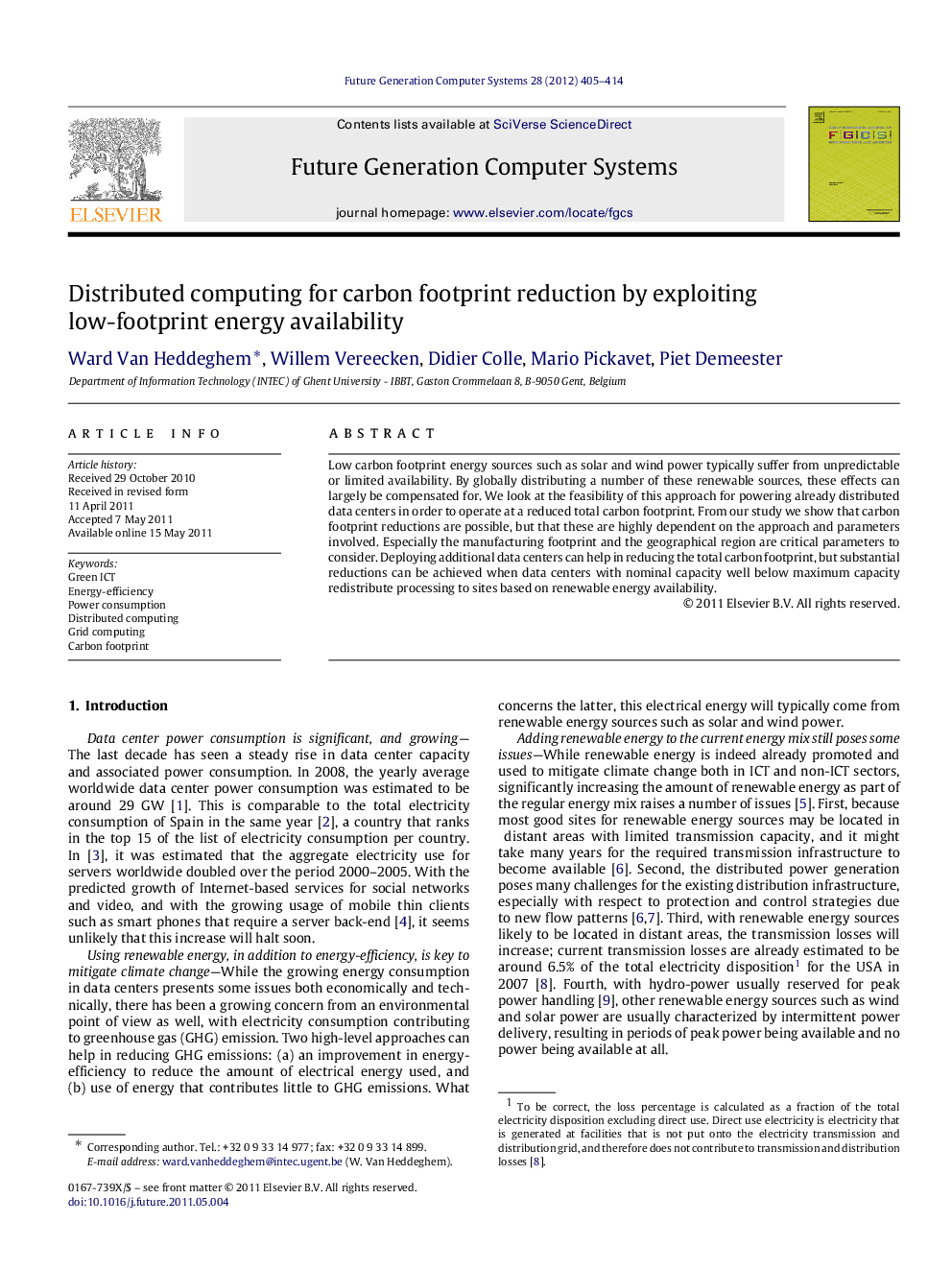| Article ID | Journal | Published Year | Pages | File Type |
|---|---|---|---|---|
| 426098 | Future Generation Computer Systems | 2012 | 10 Pages |
Low carbon footprint energy sources such as solar and wind power typically suffer from unpredictable or limited availability. By globally distributing a number of these renewable sources, these effects can largely be compensated for. We look at the feasibility of this approach for powering already distributed data centers in order to operate at a reduced total carbon footprint. From our study we show that carbon footprint reductions are possible, but that these are highly dependent on the approach and parameters involved. Especially the manufacturing footprint and the geographical region are critical parameters to consider. Deploying additional data centers can help in reducing the total carbon footprint, but substantial reductions can be achieved when data centers with nominal capacity well below maximum capacity redistribute processing to sites based on renewable energy availability.
► We create a model for carbon footprint estimation of distributed data centers. ► The manufacturing footprint contributes significantly to the total carbon footprint. ► Distributing additional data center sites can reduce the total carbon footprint. ► Footprint reduction is very parameter sensitive and can turn negative
